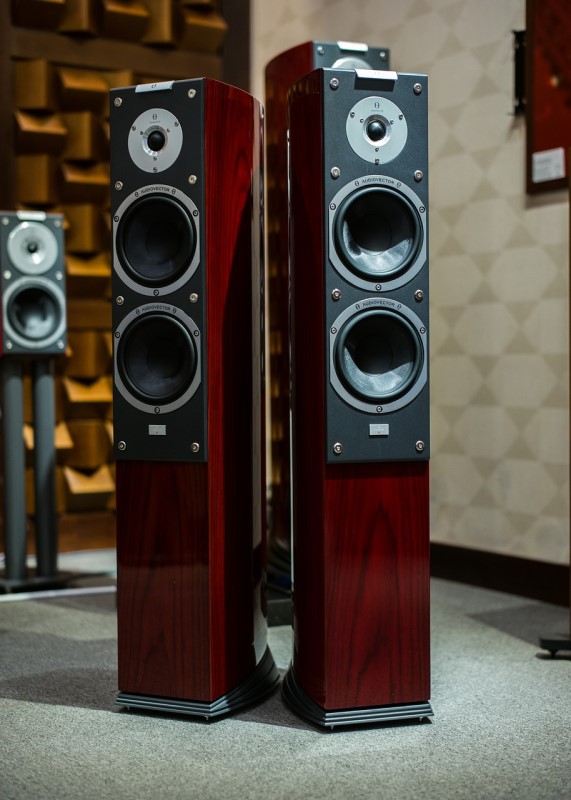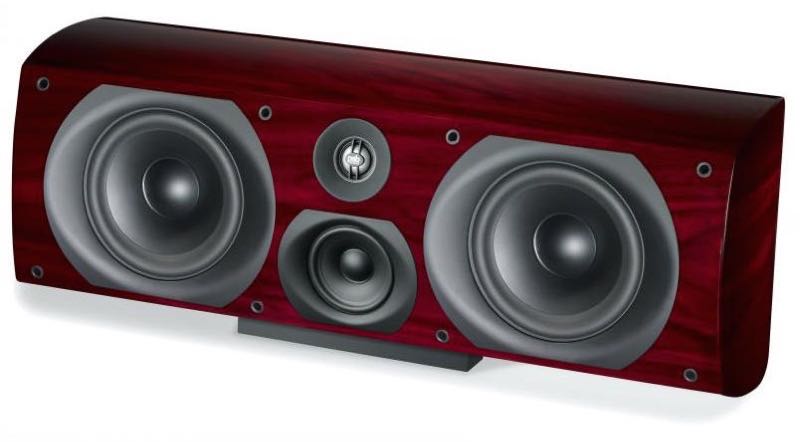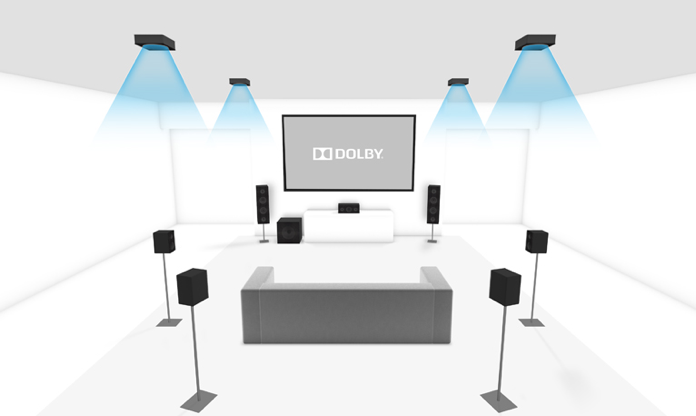Timbre Matching Speakers – Is It Important?
When you start shopping for speakers, you’ll hear the term “timbre matching.” Timbre (pronounced tam-ber) matching is when speakers sound the same. You can achieve this by using the same speakers for every position in your room. Satellite speaker systems usually benefit from this. More likely, you’ll find yourself needing to buy speakers from the same manufacturer, within the same line, based on their size or shape. The large speakers up front are great but they aren’t going to work for surround backs or Atmos. So, how important is it to timbre match your speakers?
We want speakers to sound the same so that, as the sound is directed around the room, it doesn’t change in tone. We want the helicopter flying over our head to sound the same from the front of the room to the back. If your surround speakers and front speakers are mismatched, the sense of immersion we feel when watching movies can be destroyed. Buying timbre-matched speakers ensure this won’t happen.
Timbre Matching Front Speakers – Essential

I don’t think I’ve ever run into anyone that has run two different front speakers. I’m sure it has happened, I’ve just never heard of it. If this is you, chances are you didn’t really have any other option. But, if someone were to offer you a single speaker, should you use it in place of one of your front left or right speakers? No. God, no. Don’t do this.
The front left and right speakers have the toughest duty in your home theater. They not only have to provide sound from their locations, but also create a center image when playing two-channel content. They are directly in front of you, where you hear the best, and provide the vast majority of the sound you hear. Having two identical (not just similarly sounding) speakers is essential.
Author’s Note: While all speakers should timbre match each other, when we are talking about the other speakers in your system, we are timbre matching them to your front speakers. The front speakers provide the most sound so all the other speakers should sound like them. They are also most likely to be the most expensive.
Timbre Matching Center Speaker – Important

Some people claim that the center speaker is the most important in a home theater. While we don’t agree, we do agree that timbre matching your center channel is imperative. The center sits right up front where you hear the best. It also helps out with side-to-side pans and tackles most of the voices. In a perfect world, you’d have three identical speakers up front. But that is rarely feasible with your display and other gear competing for space.
It is not impossible to find a center channel that timbre matches well enough with your front left and right speakers. It is safest to buy the matching center from the same manufacturer as your front speakers. If you find this impossible for some reason, read reviews of your speakers. Find other speakers that compare favorably and buy that center. If all else fails, reach out to the AV Rant Podcast. They’ll point you in the right direction.
Timbre Matching Surround Speakers – Helpful

Once we start moving around the room, timbre matching is less noticeable. There is no doubt that having speakers that perfectly match is the gold standard, but side surrounds and surround back speakers are far enough away (physically) from the front speakers that timbre-mismatches are not as noticeable. While mismatches are to be avoided, we are much more tolerant of timbre changes with surround speakers. Most of the time, we suggest and “try it out and see” approach. Bought new front speakers and center? Take your old speakers and move them to surrounds. If you don’t notice timbre changes, don’t worry about it. If you do, it is time to go shopping.
Timbre Matching Atmos Speakers – Meh

By definition, Atmos speakers are supposed to be in-ceiling. In-ceiling speakers are a niche market and not many manufacturers offer them. Those that do, almost NEVER have them timbre-matched to other speakers in a specific line. They just also offer in-ceiling speakers. As such, Dolby makes no recommendations on matching your in-ceiling speakers to your other speakers.
When we look at what Atmos speakers do, and how little of the frequency response they actually reproduce, it makes sense. All you need is a speaker up there. Dolby applies a proprietary EQ to the sound anyway so what is coming out of the Atmos speakers is already modified from the rest of your speakers. In the end, if the speaker is of reasonable quality, slap it up there. It’ll be fine.
Conclusion
If you have the option, get the same speaker for every position in your home theater. That way you never have to worry about timbre matching. That said, most of us mix and match speakers within the same line with no issues. It is easy enough to find “good enough” speakers for surround duty. And for Atmos? Really, it doesn’t matter. Just make sure it works.
Lastly, while timbre matching is important, we would be remiss not to point on that speaker positioning makes a big difference. Even if you have three identical speakers up front, if you play a test tone out of each, you’ll hear differences. Why? Off-axis response, boundary reinforcement, room acoustics…they all play a role. In the end, we are looking to eliminate any noticeable timbre mismatches. That’s why it is okay to mix and match some speakers in your system. If they are close enough, you won’t notice the timbre differences. And that’s the goal.



This was very helpful. Thank you. If I had to choose a different speaker as my center from my front 2 channels, is there something I should be looking at to help timbre match?
I’d look for professional reviews of your speakers. If they are compared favorably to specific speakers, that could be a place to start. If they use words like “neutral” or “flat,” you’ll be looking for speakers with a similar sound. If they are labeled anything else (bassy, revealing, tipped up/down anything) then you’ll be looking for speakers with a similar sound. Read both professional and user reviews to see what people say. Especially if they note that they didn’t notice a big difference over their previous speakers, they probably sound the same. As far as driver configuration, the only time I would really care about that is if your speakers have a horn-loaded tweeter (like Klipsch). I generally pair horn-loaded speakers with other horn-loaded speakers not because of how they sound, but because of how efficient they are.
Would you pair a Klipch R34C centre speaker with a pair of Polk S15 bookshelf speakers or would it be best to match the R34C with a pair of R41M or R51M? Thank you.
Klipsch should just about always be matched with Klipsch. If you want a different brand, look for one with a horn-loaded tweeter. Polks would not be a good match.
Will Elac dc62 center channel match with revel m106 bookshelf speakers?
Both Revel and Elac strive for a flat frequency response. As such, these should sound similar. I haven’t heard them side by side myself, but I would expect them to play together nicely. The Revels are significantly more expensive and much more capable.
I know this is an old article but I am swapping out my Yamaha ns777s for a pair of Deftech bp9040s and have them paired with a Polk cs400, Polk 8” ceiling speakers for atmos and rear surrounds and an SVS SB2000 sun. I have always loved this channel’s performance and feel it matches well with most neutral speakers. Will it match well with the Deftechs?
You could try. DefTech’s definitely have a more unique sound and don’t usually play well with other speakers.
Hi Tom, Cool article! This is my current dilemma.. hahaha. So, I’ve heard and read amazing things about the KLH Model 5 and would love to grab a pair as a front left and right for my home theater; although these aren’t targeted to TV viewing I’ve heard great results watching movies. The problem is finding a matching center. I was thinking of maybe a KEF Q650c. I should probably just buy the 3 and hear them together, but what do you think?
I’d find a way to listen to the KLH first before I worried about a matching center. You might not even like them. If you do, I’d consider a phantom center. According to 3rd party measurements, they have a bit of a midrange dip. Depending on your room, you might be able to fix that with room correction. It might make it hard to find a matching center. If you do really want a center, your best bet is to get one with a very neutral sound (flat response).
I love this very practical and helpful article. I am wondering if I have Klipsch Reference Premiere front and center channel speakers, will it be sufficient to use “any” Klipsch in-ceiling speakers? Specifically, Klipsch offers a Klipsch PRO-180RPC 8″ (designated Reference Premiere) as well as a CDT-5800-C II 8″, also with the Klipsch horn-style tweeter). The latter are a bit more affordable.
Go with the least expensive option. You are unlikely to notice any sonic difference.